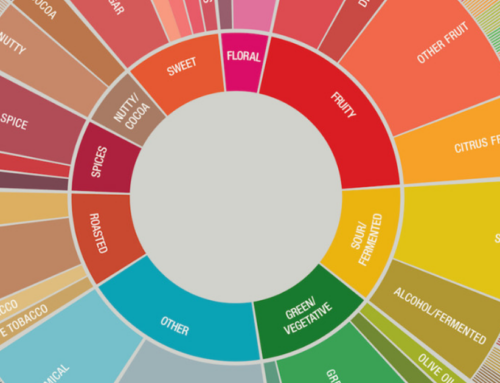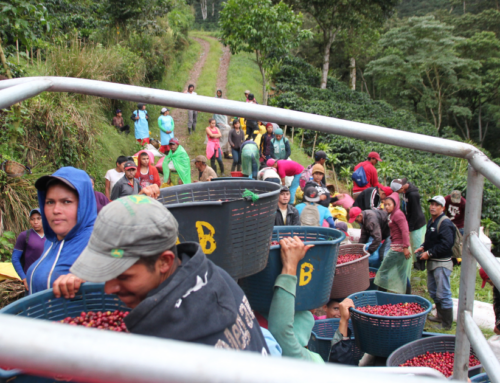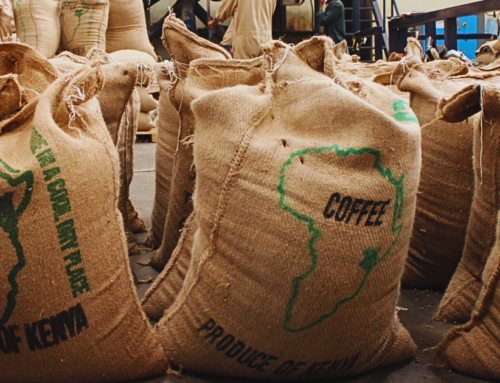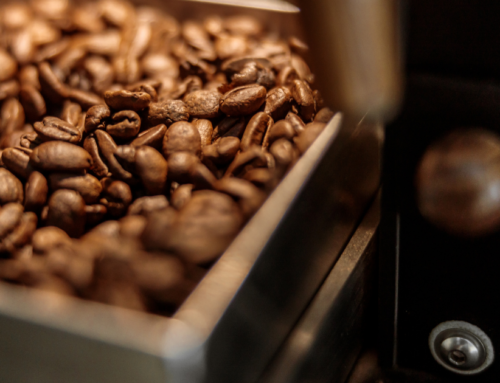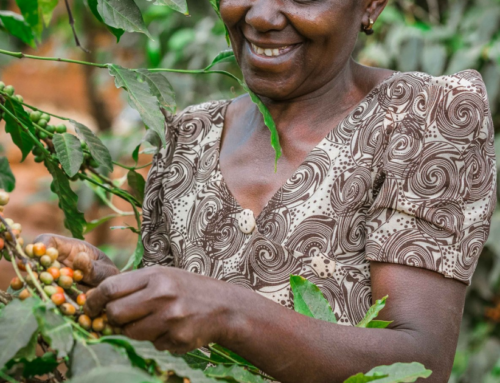The coffee market is currently navigating unprecedented price levels, with the C market over $4.00 per pound. This surge is driven primarily by concerns over supply shortages in Brazil and Vietnam, two of the world’s largest coffee-producing countries. While we’ve worked hard to keep our prices stable, Genuine Origin’s pricing follows market trends because we base our costs on replacement value—essentially, what it would cost us to restock if we ran out of a particular coffee today.

Coffee farmer hands holding unroasted coffee beans
Breaking Down Coffee Pricing
Coffee prices aren’t just about the C market rate. Beyond that base price, there are additional costs, including country differentials (which vary by origin) and payments to every entity along the supply chain—export companies, shipping lines, truckers, importers, warehouses, and more. Each step in this chain adds to the final price roasters pay for green coffee.

Espresso machine ready to pull shots | PPAMPicture – Getty Images Signature
What Should Roasters Do Right Now?
With prices at record highs and volatility increasing, many roasters are wondering how to respond. The truth is, there’s no simple answer. The market is fluctuating, meaning prices could continue climbing—or they could drop unexpectedly. This uncertainty makes timing purchases a challenge.
Here are two common approaches we’re seeing:
- Waiting for Prices to Drop: Some roasters are holding off on purchases, hoping the market will correct. However, there’s a risk that prices may rise further, making future purchases even more expensive. Worse, waiting too long could mean running out of inventory, putting your business at risk.
- Stocking Up in Anticipation of Higher Prices: Other roasters are buying larger quantities now, expecting prices to rise even more. The risk here is that the market could drop, leaving them with coffee purchased at a premium.
Instead of trying to predict the market, the best strategy is to align your purchasing with your risk tolerance. Keep enough coffee on hand to avoid running out, but don’t overstock to the point where a price drop could leave you at a disadvantage.

Coffee roasting checking roast level Img by RyanJLane from Getty Images Signature
Raising Prices: A Necessary Conversation
Given the current situation, don’t be afraid to adjust your prices. Every coffee company is experiencing these cost increases, and the news cycle is already preparing consumers for higher coffee prices. The key is communicating clearly with your customers.
Here are a few talking points to help explain the situation:
- Global weather issues are impacting supply. Brazil’s drought and Vietnam’s excessive rainfall have significantly reduced coffee production, driving up prices.
- This is a supply-driven price increase—with less coffee available, prices naturally rise.
- Logistical bottlenecks at several origins are increasing transit times.
- The upside? Higher prices encourage farmers to plant more coffee, which could eventually stabilize prices. However, this process takes time, and we don’t have a crystal ball to predict exactly when relief will come. This isn’t the first time prices have spiked; it is likely not the last time either.

Img – stocksnap from Pixabay
We’re Here to Support You
At Genuine Origin, we remain committed to sourcing high-quality, premium coffees despite market challenges. Our team is here to help you navigate pricing, plan purchases, and find the right coffees for your business. While the market is uncertain, one thing remains constant: our dedication to supporting roasters through every turn of the coffee industry.
If you have any questions or need guidance, reach out to us—we’re in this together.


